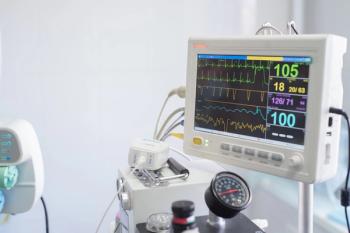
New test identifies hereditary cancer presence with high accuracy
Researchers developed a CRISPR-Select assay to classify BRCA gene variants, improving early breast and ovarian cancer detection.
A test has been developed to assess patients for the presence of a hereditary genetic mutation linked to multiple forms of cancer such as breast and ovarian cancer, according to a recent study from the University of Copenhagen and Rigshospitalet.1
Detecting hereditary cancer mutations
The test identified the gene BRCA2, a significant gene in breast, ovarian, pancreatic, and prostate cancers. Maria Rossing, MD, PhD, clinical research associate professor at Rigshospitalet, believes this method of testing may save lives if implemented in a clinical setting.1
“If we know a patient has a pathogenic mutation, we can intervene before the cancer has a chance to develop. For those already affected by the disease, we can treat them faster and more precisely. In the long run, this will save lives,” said Rossing.1
Mapping and classifying BRCA1 and BRCA2 variants
Researchers mapped the functional effects of 54 BRCA1 and BRCA2 variants of uncertain significance (VUS), then evaluated the efficacy of the functional assay in classifying these VUS in a clinical setting.2 Controls included 5 PALB2-binding domain (PBD) variants classified as benign and 5 PBD variants classified as pathogenic.
The best performing CRISPR RNAs (crRNAs) were identified through a CRISPR-Select cassette design. This involved editing variants with specific crRNAs based on overall crRNA editing efficiency.2
Investigators cited inbuilt internal controls as the primary reason for using CRISPR-Select, as these allow the functional testing of VUS and synonymous (WT′) variants simultaneously in the same cell culture dish. This led to a mixture of BRCA2-targeting single-stranded oligodeoxynucleotides being used to transfect cells.2
Normalized variant/WT′ ratios for 9 benign variants and 14 pathogenic variants underwent receiver operating characteristic curve analysis, allowing for neutral, intermediate, and deleterious thresholds to be identified. Poly-ADP-ribose polymerase inhibitors, cisplatin, and mitomycin C (MMC) were used as experimental controls to assess the assay’s sensitivity and specificity.2
Key findings on variant impact
Deleteriousness was identified in VUS within the exon 2 donor splice region (D23H) and all Trp31 alterations. A neutral phenotype was reported in the remaining VUS and the benign variant controls. Additionally, 3 other deleterious variants were found from the MMC sensitivity assay. An intermediate effect during MMC treatment was only reported for G25R.2
According to investigators, this highlighted the additional data about variant effects that could be obtained from an MMC-based sensitivity assay, indicating significant benefits from including it in VUS assessments. By cloning a fragment with the BRCA2 exon 2, investigators also found 2 independent aberrant splicing patterns of the D23H variant.2
The final results indicated that 49 of the 54 VUS were likely benign and likely pathogenic. Additionally, the exon 2 donor splice region and the Trp31 aa in the PBD were both found to be vital for BRCA2 function. This indicated the CRISPR-Select assay has highly suitable for functional variant analysis.2
“When researchers or doctors anywhere in the world search for these 54 variants in the databases, they’ll see our classification. This has implications far beyond Danish patients,” said Rossing.
References:
- More women can now get answers about their hereditary risk of breast and ovarian cancer due to new genetic method. University of Copenhagen. June 17, 2025. Accessed June 23, 2025. https://www.eurekalert.org/news-releases/1087784.
- Bose M, Indrajit Singh M, Frödin M, Ejlersten B, Sørensen CSS, Rossing M. Precision screening facilitates clinical classification of BRCA2-PALB2 binding variants with benign and pathogenic functional effects. J Clin Invest. 2025;135(12):e181879. doi:10.1172/JCI181879.
Newsletter
Get the latest clinical updates, case studies, and expert commentary in obstetric and gynecologic care. Sign up now to stay informed.
















